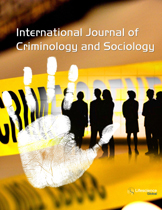ijcs
Abstract : Explaining Torture: A Case Study
|
|
Abstract: During the late 1960s and early 1970s, most Latin American countries experienced military coups and military interventions in government affairs. One of the worst consequences of these military interventions was the torture and murder of thousands of people. This study focuses on the perpetrators of torture and examines group influences on the occurrence of torture and the behavior of torturers. To achieve this goal, we have conducted field research to interview and evaluate individuals who were members of the Chilean police and military during the 1980s. Interviews were conducted with Chilean military and police torturers active during the military regime (1973 – 1990). Group influences are strongly associated with the institutional context. The study identifies common patterns among the perpetrators but also considers the marked differences between them and demonstrates the important role of the group in enabling the perpetration of torture. Few studies have examined torture behavior in an institutional framework, and the identification of these features may allow this type of crime to be prevented. Keywords: Torturer behavior, political crimes, group influences, torture. |
Abstract : Lethal Violence and Peripheral Youth Extermination in Brazil Amazon Region
|
|
Abstract: This work aims to discuss the homicide problem in the Brazilian Amazon region, based on the analysis of data collected by DATASUS, Sangari and Ipea Institute on homicides in Brazil, which were systematized within the framework of the “Amazonias: Knowledge and Changes” project, and by interviews analysis carried out with relatives of victims of the region. Based on these studies, which point out that the main victims of this type of violence are youth from the peripheries and using the notion of sociodiversity, we try to understand how violence against this youth maintained relation with neoliberalism set of governmental practices, as described by Michel Foucault in The Birth of Biopolitics. In this way, we think possible to provide a synthesis of the major problems of lethal violence and extermination of peripheral youth in the Amazon Region. Keywords: Lethal Violence, Amazon Region, Peripheral Youth Extermination. |
Abstract : Citizen Opinion Survey: How a Mid-Sized California Community Perceives their Police Department
|
|
Abstract: Successful community policing is, in part, dependent on the community’s perception of their police officers. The police department of a mid-sized community in California’s Central Valley conducted a survey to gain some measure of the citizen’s perception of their police. The survey was conducted in conjunction with a nearby California State University. The results of the survey are being used to make revisions in the policies and procedures of the police department. It also proved to be an interesting activity for the professors and students of the university. Keywords: Survey, police, community perception, research partnership, canvassing a community. |
Abstract : The Role of Law Enforcement in Community-Based Drug Treatment and its Impact on Crime Prevention
|
|
Abstract: In line with trends in other countries the Royal Thai Police acknowledges the need for more community-oriented approaches which are responsive to local contexts. However, the development of such approaches to policing needs also to engage with responses to illicit drug use locally, which would include a wider definition of harm reduction and accommodate the work of public health partners their initiatives, such as needle-exchange. Keywords: Policing, community-based drug treatment, harm reduction, Thailand. |






















